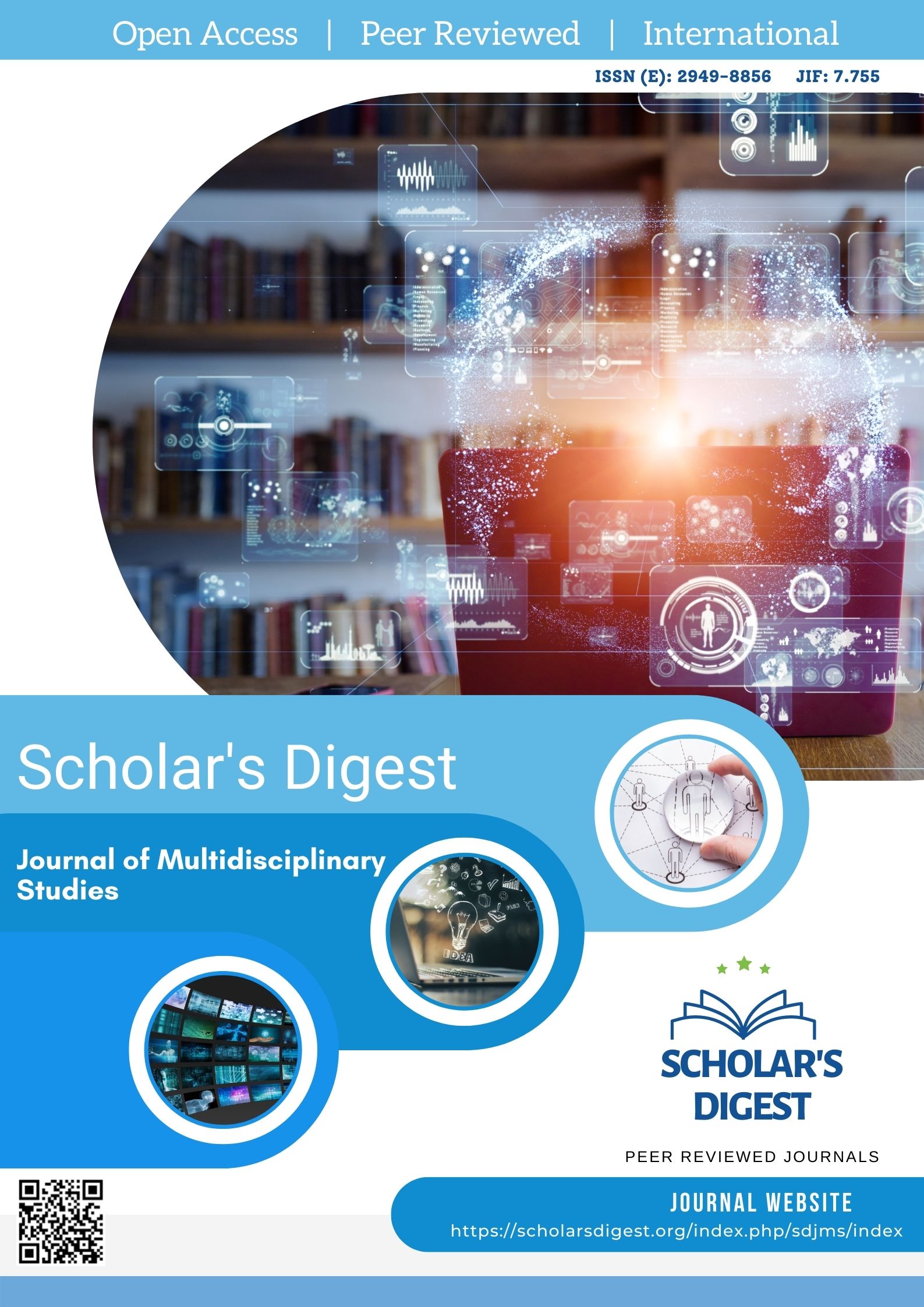THE ANTITHETICAL DUALISM OF THE PHENOMENA OF OMISSION AND EMPHASIS INTERPRETATION OF THE HOLY QUR’AN, ITS PARSING, AND ITS EXPLANATION BY SHEIKH MUHAMMAD ALI TAHA AL-DURRA (D.1428 AH)
Abstract
The duality of the two phenomena (deletion and emphasis) are two of the Arab schools of thought, and they are among the grammatical phenomena that are not unique to the Arabic language alone, but they are transparent in Arabic; because "deletion and emphasis are mutually exclusive and contradictory", so (the phenomenon of deletion) in Arabic is more stable and clear, as stated in this research, including: deletion of the subject, or deletion of the predicate, or deletion of the verb or the subject or the direct object, or deletion of the preposition, or deletion of the answer to the condition, or deletion of the predicate of "was", so deletion is the omission of what is indicated by evidence, like someone who, if asked "Who came to you" says "Zayd" instead of the complete sentence "Zayd came to me", without affecting the meaning. And that what indicates it is replaced by what indicates it, or not; and the diversity of deletions if indicated by evidence for purposes, the most prominent of which is rhetorical metaphor; Because Arabs by nature tend to what is light and are repelled by what is heavy in their language, it has become a characteristic of the language to tend to deletion and abbreviation for the sake of brevity. As for (the phenomenon of emphasis), it is no less important than the phenomenon of deletion, as emphasis is the intention and documentation to prove something in speech, and the types of emphasis in the language are two types, either: it is mentioned in specific words which are: (self, eye, all, all together, and general) or pronouns are added to it that match the emphasized to achieve and confirm the intended meaning, if the meaning is imaginary or doubtful to the addressee. Or the emphasis is by repeating a letter, word or a specific sentence, so in repetition there is a confirmation of the meanings in the souls, and the more it is repeated, the more it is possible for it in the heart and more firmly rooted in understanding, and further from forgetfulness, and there is no dispute for it in informing and establishing what is perceived by the meaning, and it had an effect on the verses in the Qur’anic text, and what they included of meanings for the purpose of understanding, and their burden was spared in the blessed Qur’anic verses, and in the interpretation there is a great abundance of the two phenomena.
References
) Al-Burhan fi Ulum al-Quran: Al-Zarkashi: Edited by: Muhammad Abu al-Fadl, Issa al-Halabi Press, Cairo, 1954, vol. 2, p. 255
( 2 ) Interpretation of the Holy Quran, its grammar and explanation: Muhammad Ali Taha al-Durra, 1st ed., 1430 AH - 2009 AD, Dar Ibn Kathir - Damascus.: Vol. 5 / 689.
( 3 ) The proverb in the literature of the writer and poet: Nasr Allah bin Muhammad bin Muhammad bin Abdul Karim al-Shaibani, al-Jazari, Abu al-Fath, Diaa al-Din, known as Ibn al-Athir the writer (d. 637 AH): Edited by Muhammad Muhyi al-Din Abdul Hamid (d. 1392 AH), Al-Maktaba al-Asriya, Beirut, 1420 AH, 2 / 95.
( 4 ) Interpretation of the problematic Quran: Ibn Qutaybah: 149-150 .
( 5 ) Characteristics: Abu al-Fath Uthman ibn Jinni [d. 392 AH], trans. Muhammad Ali al-Najjar [d. 1385 AH], Egyptian General Book Authority, 4th edition, 2/444 .
( 6 ) Al-Sahah, the Crown of Language and the Correct Arabic: Abu Nasr Ismail ibn Hammad al-Jawhari al-Farabi (d. 393 AH), Ahmad Abd al-Ghafur Attar, Dar al-Ilm lil-Malayin - Beirut, 4th edition, 1407 AH - 1987 AD, 4/1341 (deleted .)
( 7 ) The Basis of Rhetoric: Abu al-Qasim Mahmoud ibn Amr ibn Ahmad, al-Zamakhshari Jar Allah (d. 538 AH), trans. Muhammad Basil Ayoun al-Sud, Dar al-Kutub al-Ilmiyyah, Beirut - Lebanon, 1st edition, 1419 AH - 1998 AD, 1/177.
( 8 ) Al-Mathal al-Sa’ir: Vol. 2/170.
( 9 ) The Book: 3/288.
( 10 ) Ibid 1/592
( 11 ) ibid 4/83.
( 12 ) Al-Bahr Al-Muhit (in interpretation): Muhammad bin Yusuf, known as Abu Hayyan Al-Andalusi [d. 754 AH, thus on the cover of the printed edition! The correct version is (d. 745 AH) as in the sources of his biography], edited by: Sidqi Muhammad Jamil Al-Attar (vol. 1 and 10) - Zuhair Ja`id (vol. 2 to 7) - Irfan Al-`Asha Hassouna (vol. 8 to 10), Dar Al-Fikr - Beirut, 2/86 .
( 13 ) Al-Mathal Al-Sa`ir: vol. 2/170 .
Downloads
Published
Issue
Section
License

This work is licensed under a Creative Commons Attribution-NonCommercial 4.0 International License.








